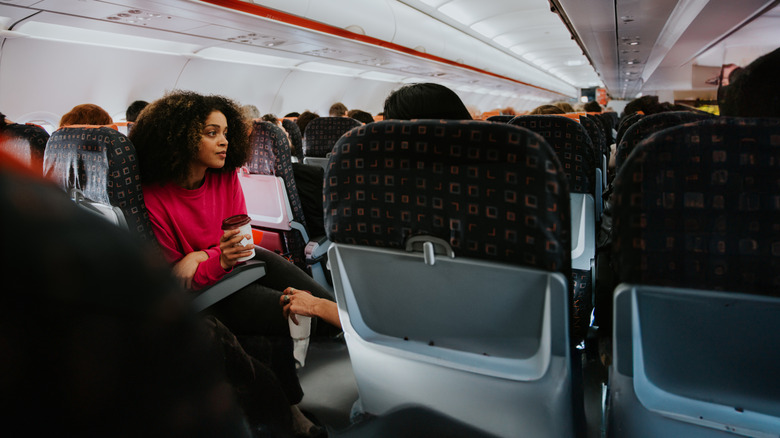The Two Types Of Flights Passengers Frequently Mix Up But Are Quite Different From Each Other
Booking a flight sounds simple enough — pick a date, choose a destination, and you're good to go. However, it's rarely that straightforward, especially if you're trying to save money on airfare or flying halfway across the world. Ideally, you'd find an affordable flight that gets you there in one go with no extra hoops to jump through. But the reality of airfare is a little messier. If you're budget-conscious, you'll have to weigh whether paying extra for premium economy is worth the legroom. If you're feeling fancy, you might start wondering if there's even a difference between first class and business. And if you're all about efficiency, you'll quickly learn there's a sneaky difference between "direct" and "non-stop" flights.
A direct flight sounds like it should be the fastest route, but it often comes with a catch: stopovers. The plane might land somewhere else before your final destination (once or multiple times), but you won't switch planes or flight numbers. You'll stay onboard while the aircraft makes a pit stop — sometimes for hours. Meanwhile, a non-stop flight is exactly what it sounds like: one plane, one takeoff, one landing, and no detours. It goes from point A to point B with no interruptions whatsoever. Of course, there's a trade-off. Non-stop flights are faster and far more convenient, but they're also more expensive. If you're not in a rush, flights with stopovers or actual layovers can save you a chunk of change.
There's a case to be made for direct and non-stop flights
No one likes being hassled when they travel, so it makes sense that non-stop flights are the golden child of air travel. You board once, you land once, and voilà — you're exactly where you need to be. Even if you're stuck on the longest flight in the world, it's still kind of magical that you only have to get up when you've arrived at your destination. But despite the convenience, non-stop flights aren't always ideal, even if you're not pinching pennies.
According to Dr. Tony Schiemer, aviation medical specialist, academic, flight instructor, and former naval officer, an ultra-long-haul flight can be risky for certain travelers. "The ones that are at high-risk are those at higher age. Obesity is a major risk factor and so is pregnancy, particularly the postpartum period," he tells The Sydney Morning Herald. This is where a direct flight with a stopover or a layover can be a good thing to avoid turning into a travel-shaped raisin.
Although you may not be able to leave the plane on a direct flight with a stopover, the break gives you a chance to stretch, move, and breathe. You'll get to your destination later than with a non-stop flight, but you'll probably feel a little more comfortable than if you were stagnant while in the air for multiple hours. If you prefer to get a flight with an actual stop where you leave the plane, there are ways to use your layover time effectively. Booking separate flights with a long layover can give you enough time to leave the airport and hit a city's highlights without stress and rushed transfers.

